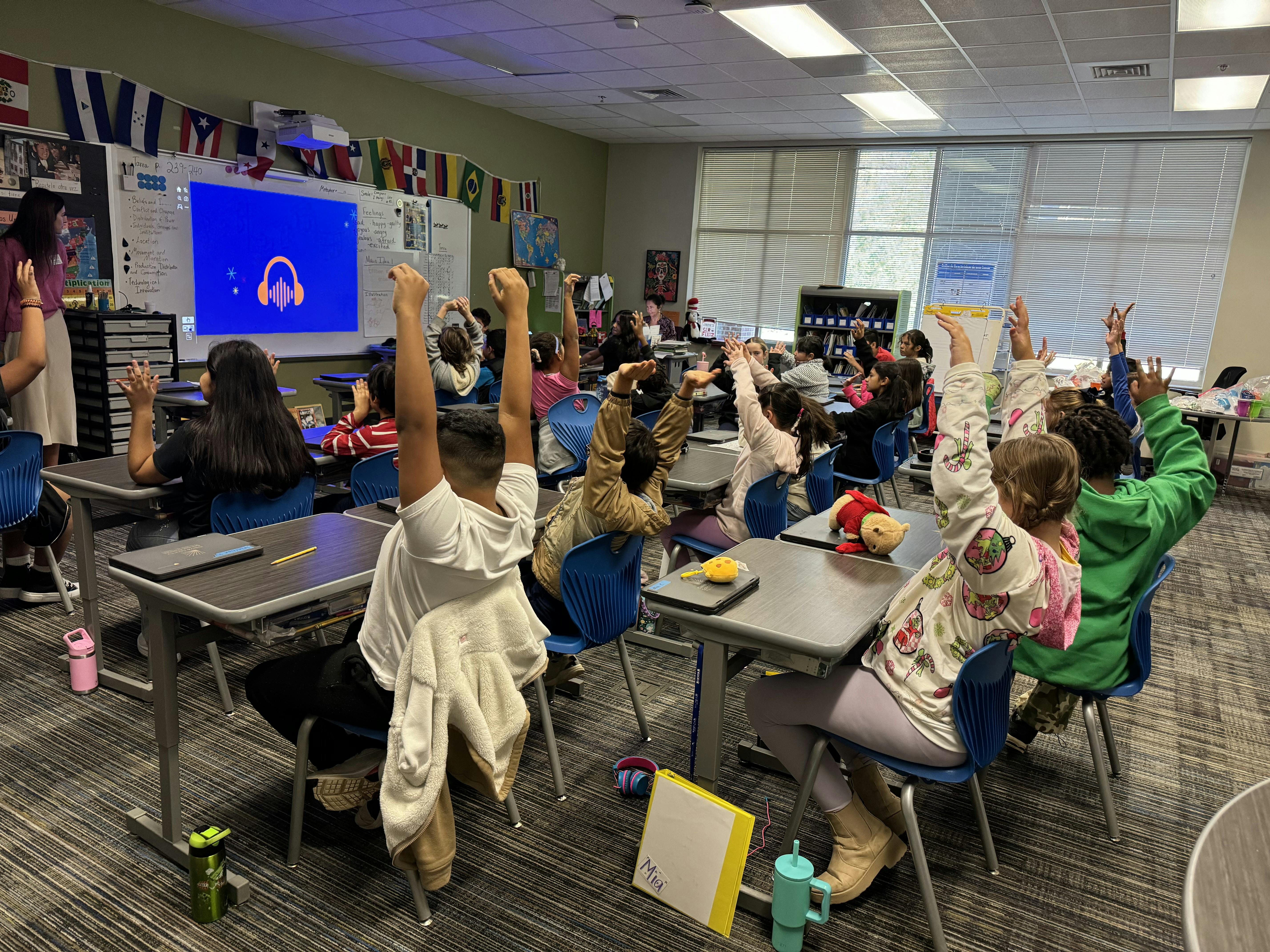“ESCI 4420: Science for Elementary Education” brings preservice teachers in the Mary Frances Early College of Education to science classrooms in a Clarke County elementary school.
First taught in the spring 2024 semester, the course provides both teaching experience for preservice teachers in the College and an exchange of teaching strategies with classroom teachers in Clarke County School District (CCSD). Taught on-site at Oglethorpe Avenue Elementary School, a dual language immersion school in the district, students also gain experience teaching in a Spanish-language classroom.
“It’s really an interesting idea that there could be this two-way exchange, that the teachers can actually learn from the students, the students can learn from the teachers, and we can learn from the community,” said Emily Adah Miller, an assistant professor in the Department of Mathematics, Science, and Social Studies Education who teaches the course.
 Adah Miller coordinated the course with staff at the school and the district including Seri Beall, science curriculum coordinator; O’Marr Curry, principal of Oglethorpe Avenue Elementary; Elizabeth Dubberly, (Ph.D. ’24), dual language academic support specialist; and Jeanna Wheeler, instructional coach. They plan to expand the partnership to another school, Holston Elementary, in the fall.
Adah Miller coordinated the course with staff at the school and the district including Seri Beall, science curriculum coordinator; O’Marr Curry, principal of Oglethorpe Avenue Elementary; Elizabeth Dubberly, (Ph.D. ’24), dual language academic support specialist; and Jeanna Wheeler, instructional coach. They plan to expand the partnership to another school, Holston Elementary, in the fall.
“CCSD students benefit from highly engaging, hands-on lessons, while our teachers learn by observing the innovative teaching strategies modeled by UGA preservice teachers,” Beall said. “At the same time, UGA preservice teachers gain valuable, authentic teaching experience in a supportive environment.”
Instead of observing students as they teach, Adah Miller used a collaborative reflection format. She emphasized to them that teaching is a creative endeavor and that science is fun to teach and learn, with the goal of taking some of the stress off students as they taught in a new setting.
“You can really see the kids engaging and also learning, and that’s really satisfying as a student teacher, to see kids engaged and learning what you’re teaching them,” she said. “And you can pull away some of that high pressure and high stress by making it something that you’re experimenting with—new pedagogies, new practices, new ways of teaching.”
The language of science
Students in the course plan four different kinds of pedagogies—modeling, investigation, place-based discourse, and phenomena-based discourse—as well as incorporating English-language arts (ELA), math, and practices from the Next Generation Science Standards and Georgia Standards of Excellence into their lessons.
“From our perspective at the school, it was really meaningful to have the students come in and show the teachers some of their strategies, or some inquiry-based learning that they were doing, some different teaching strategies,” Dubberly said. “That was a really important part of this project.”
In the fall 2024 semester, fourth-year students Addy Brantley (A.B. ’25, B.S.Ed. ’25) and Sean Hauser (B.S.Ed. ’25) worked together in a group that planned and taught science lessons to the fourth-grade class at Oglethorpe.
Hauser said that using teaching strategies such as modeling made it easier to communicate information to students and break down concepts through hands-on learning. For example, he had students create a “cloud in a jar” to model the real-world process of how clouds form.
“I think out of all subjects, it might be one of the easier ones to get people from different backgrounds and language backgrounds involved,” Hauser said.
Brantley, who is also majoring in Spanish, practiced both teaching science and speaking Spanish in the class.
“It was just really fun interacting with the science material because it’s something that does have aspects of reading and writing, but it’s something that everyone can do, no matter what the language is,” Brantley said. “You can meet in the middle with that really easily.”